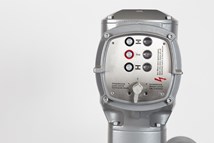Largest Wastewater Heat Recovery System in the United States Launches in Denver
The new system will heat and cool buildings with recycled thermal energy from a nearby wastewater pipeline.
#water-wastewater
Edited by Margo Ellis

The largest wastewater heat recovery system in the United States has been launched at the National Western Center (NWC). NWC said the system is part of its goal to create a low-carbon campus that’s sustainable and regenerative.
“We made a promise to be at the forefront of sustainability, and we’re delivering,” said National Western Center CEO Brad Buchanan. “Knowing we have to heat and cool our buildings one way or another, we chose an innovative, clean-energy system that’s both beneficial for our campus but also for our community.”
NWC said the wastewater system is housed in an 8,790-square-foot central utility plant constructed of a pre-engineered metal building. In order to build the system, the City and County of Denver’s construction team had to bury a 72-inch wastewater pipeline that once ran alongside the South Platte River, removing its odors and opening up recreational space.
Here’s how the wastewater heat recovery system works:
- Used water goes down the drains of showers, sinks, bathtubs, dishwashers, washing machines and toilets and travels through a main sewer pipeline.
- Within the NWC’s wastewater heat recovery system, a plate and frame heat exchanger captures the warmth of that wastewater and transfers it to a clean water distribution pipe.
- The distribution pipe enters into individual buildings using a closed-loop system (clean water never touches wastewater) and harnesses the energy from the system to heat and cool the buildings.
The system was designed, built and will be operated by EAS Energy Partners (EAS), through an agreement with the NWC. EAS comprises core-competency district energy operator CenTrio, AECOM Technical Services Inc. and Colorado-based Saunders Construction. The original reporting from 9News is here.
RELATED CONTENT
-
The Limits of Standard Manual Globe Valves for Throttling
A common practice in process services is to use manual globe valves with hand wheels for regulating flow.
-
PFAS Chemicals and PTFE: Should the Valve Industry Be Concerned?
Legislation moving through Congress could affect the future use of thousands of PFAS chemicals (per- and polyfluoroalkyl). The house passed H.R. 2467 in July of 2021 and, though the bill is general in nature, it assigns the responsibility to the Environmental Protection Agency (EPA) for determining which PFAS chemicals will be controlled or banned altogether.
-
The Role of Valves in HAZOP Studies
Process hazard analysis (PHA) is required by U.S.











 Unloading large gate valve.jpg;maxWidth=214)